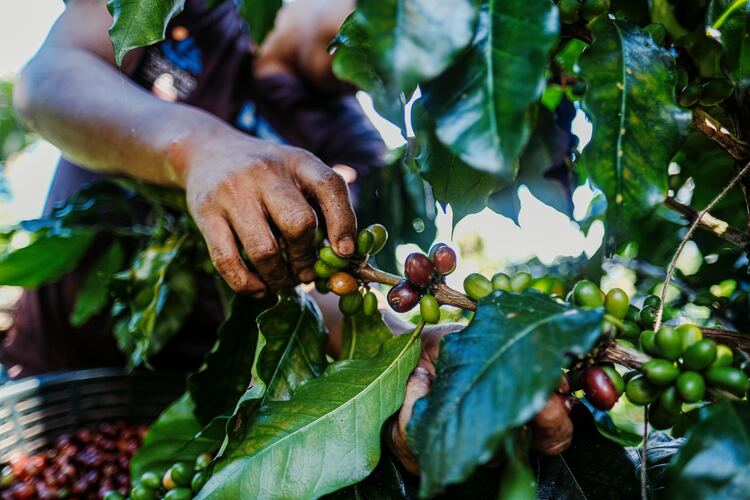TANGANYIKA AND HAUT-KATANGA PROVINCES (SOUTH-EASTERN DRC)
The Tanganyika and Haut-Katanga Provinces, located in the south-eastern region of the Democratic Republic of the Congo, form an emerging yet historically significant coffee-producing area. These provinces share borders with Zambia and Tanzania, benefiting from similar agro-climatic conditions found in the highlands of East and Southern Africa. Altitudes range from 1,000 to 1,800 meters above sea level, with moderate temperatures and well distributed rainfall that provide a favourable environment for Arabica cultivation in the upland zones and Robusta in the lower plains. The soils are a mix of volcanic and lateritic loams, enriched with minerals, offering good drainage and supporting coffee trees with strong root systems.
In Tanganyika Province, coffee is mainly grown along the western shores of Lake Tanganyika, particularly in the Kalemie, Moba, and Nyunzu territories. Here, Arabica coffee thrives in the cooler highland microclimates, while Robusta dominates in lower-lying zones closer to the lake basin. In Haut Katanga, coffee is cultivated around Lubumbashi, Kasenga, Kipushi, and Pweto, where the terrain transitions into the Miombo woodland belt. Farms are smallholder-based, often ranging from one to three hectares, with intercropping of food crops such as maize, beans, and cassava.
The coffee produced in these provinces is predominantly Arabica (Bourbon and Typica), with Robusta cultivated in limited quantities. The washed Arabica from the uplands are appreciated for their smooth body, gentle acidity, and balanced flavour profile, often featuring nutty, caramel, and mild fruity notes. The Robusta, on the other hand, display a stronger body, low acidity, and chocolate-like tones, making them suitable for blending.
Economically, coffee is an important but underdeveloped sector in south-eastern DRC. Many plantations date back to the colonial period and several have been abandoned or poorly maintained over the decades. However, renewed investment and cross-border trade opportunities with Zambia and Tanzania are helping to revitalize local coffee production. Development programs and smallholder cooperatives are emerging to improve access to quality inputs, extension services, and processing infrastructure. As a result, Tanganyika and Haut-Katanga are regaining recognition as promising coffee zones, capable of producing distinctive regional coffees that complement the DRC’s better-known Arabica regions in Kivu and Ituri.

